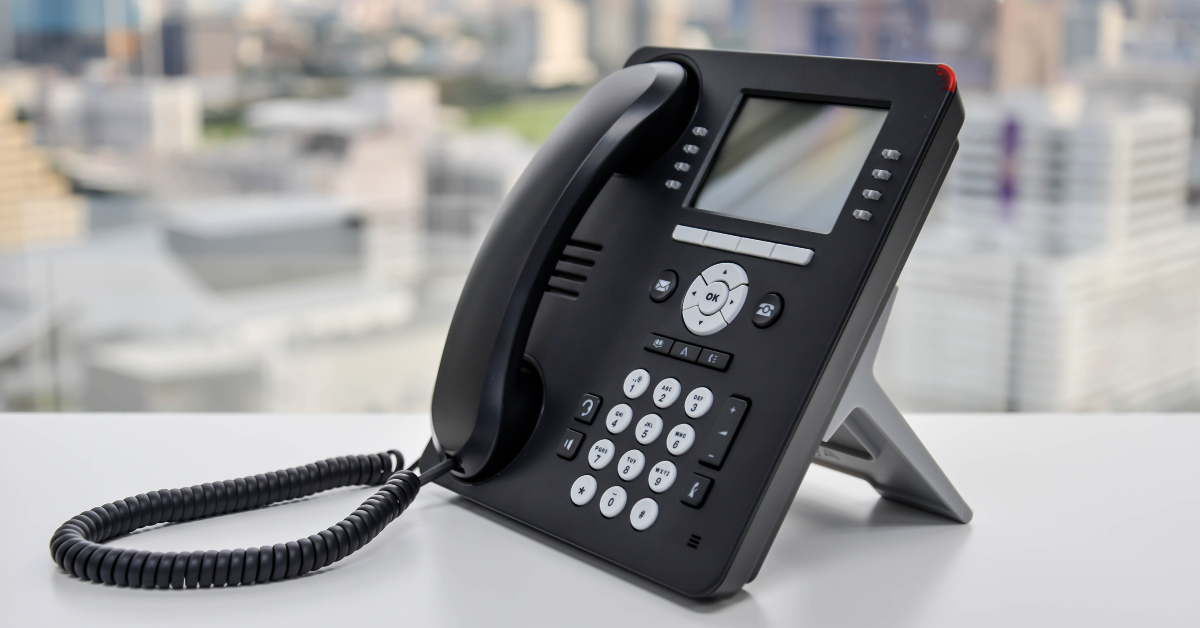To most people, just the thought of going to the dentist is downright cringe-worthy. The drills, the smells, the funny tasting paste, the hygienist staring so closely at your face. I am sure that the list could go on for days, but in the interest of time, I will end it there. Needless to say, it doesn’t take much to spook new patients away.
While I am no expert regarding the dental industry, I am a devout dental health customer, have over a decade of experience in direct customer service positions, and am currently employed by a professional answering service agency that has been in operation for over 60 years-our number one goal is to make sure that every caller receives a positive customer service experience.
So, while I can’t recommend the best toothpaste to tell your customers to use, I do know a thing or two about best practices to make customers happy. And happy customers usually stick around. Not only that, they tell other people about their positive experience. And then BOOM, your business is on its way!
What prompted me to write this article about how to capture and retain new dental patients, was a very recent experience that I had looking for a new dentist. One office blew it out of the park and gained my business and repeat business, and the other one…well, they just blew it.
It all started with a move. While this can be an exciting time, it is also very stressful. The packing, the saying goodbye, the unpacking, figuring out where everything is around you, and WORST of all, finding new service providers. For most people, this aspect of moving is literally a dreaded nightmare, especially if you had found a perfect match where you lived before. And for me, I had found the best dental office that a person could ask for.
The staff learned my name right away and greeted me at every appointment-like they were actually happy to see me. My hygienist was gentle, personable, and kind. The dentist didn’t pressure me into getting procedures done that I wasn’t fiscally or emotionally ready for. They always accommodated my schedule when making appointments. And these are just a few of the many reasons why they will forever be the benchmark to which I will compare every other dental office to.
What made them the best is the fact that they were customer service dynamos and hired staff that were too. I don’t know what went on behind the scenes, but for an office to run as smoothly and professionally as theirs did, I can only imagine that from the top down, they all knew what their roles were in keeping customers happy, and they were all on the same page about how to execute the plan to do so. What no patient probably thought about—but certainly felt—were the tiny but crucial details being worked out with exact precision.
Having said all of that, I was dragging my feet about looking for a new dentist when I settled in after my move. I was actually avoiding it, until one day, I received a postcard in the mail from a local dentist. I am going to call them “Dentist D.” I can’t call them “Dentist F” because their marketing efforts did, in fact, get me to call in, so they weren’t a total failure.
The message on the postcard was personally catered to me. Kudos to them for actually capturing my interest. It said, “New in the neighborhood?” and I thought, yes. Then it went on to say, “Looking for a dentist?” and I thought, yes. Then it gave me a very clear call to action “Call us today!” and I did.
They had delivered a spot-on marketing message, had even gotten me to call in, but didn’t win my business. If you are wondering why they failed to convert me, and interested in tips about how they could have done a better job, here are the two explanations in detail:
FAILURE #1: I DID NOT HAVE A POSITIVE EXPERIENCE DURING MY INITIAL CALL.
Assessment:
I don’t know if it was the script that the receptionist was given to answer calls, or if she just lacked customer service skills-but nothing about the reception that I received gave me the “welcome to your forever dental office” feeling that I needed. Why? Because instead of engaging with me in a conversational tone to gather answers to questions that she asked, I was blasted with question after question. It honestly felt like I had called a polling house. It was a cold and completely unpersonable way of doing business. It also made me wonder if this was the only area that the company didn’t put its best foot forward for its patients.
Pointers:
- Hire receptionists who truly care about people.
The dental industry is a professional service industry. Being a success in a service industry requires a company to hire staff—especially receptionists—who can communicate well, resolve problems quickly and patiently, who are kind and compassionate, and who truly love people and can connect with them easily. If you hire someone with all of these qualities, you won’t have to spend time worrying if they are doing a good job for you, because their servitude mentality will lend itself to helping others, even when you are not around.
→Asking questions regarding these topics during interviews and reference checks will give you a good indication if the candidate will be a useful asset to your company.
- Don’t take call scripting lightly.
Good scripting allows you to make sure that whomever is answering the phone for your company is capturing all of the data that you need in order to assist your callers quickly and efficiently, and that each caller is receiving a similar customer experience. However, the wrong scripting, or over-scripting, can wreak havoc on how potential patients will perceive your office. And another thing to remember: people are generally limited on time, so don’t waste it asking questions that could be asked later. Here are two tips to remember when writing scripting for your receptionist:
1) Give your receptionist the autonomy to get the call back on track if they realize that the caller is unsatisfied with the way that the conversation is going. No one likes feeling like that are speaking to a robot.
2) Hold questions that are not relevant to getting a consult or appointment scheduled for a new patient call. You can add any questions not answered during the call to the new patient forms, or ask them when the individual is in the office. If you can meet a caller’s needs quickly and effectively on the phone, they will assume the same about the service you will provide to them in the office.
→Make sure to do your research before writing a script, then let your receptionist help you tweak it to allow them to follow their natural speaking pattern for a more personable experience.
- Have a mystery caller contact your business, or call your own business periodically to check on your front-end service.
It is perfectly ok…no, let me restate that-it is essential that you know what your callers are experiencing when they reach your office. This is the only way to discover if improvements need to be made to “wow” your patients and potential patients.
→Having a third party make this call for you will allow you to evaluate the call with less bias—especially if you wrote the script—and give you a greater insight into your caller’s experience.
FAILURE #2: THE RECEPTIONIST/OFFICE FAILED TO ACCOMMODATE MY NEEDS.
Assessment:
I told the receptionist at the beginning of our conversation that I was calling to schedule an appointment for a six-month checkup. I then reluctantly sat through the 50-question ordeal. Then the receptionist turned on the sales charm. She rattled on about free x-ray services and a few other free things that I was going to receive. She actually had me a little pumped. I was getting things done! I was getting free stuff, too! Then, things quickly headed south.
Once we had agreed on the perfect date, I asked who my dentist and hygienist were going to be, because there were several in the practice. She replied, “Oh no ma’am, you won’t be seeing the dentist or hygienist that day, I mean if one is around after we finish your x-rays then we can try to squeeze them in to see you.” (Stated to me as if I should feel privileged for the consideration that I was being given.) What??? That is the exact point where “Dentist D’s” office officially lost my respect and business!
The entire purpose of me taking time out of my busy day to pick up the phone and call was to schedule a six-month checkup. Why then would the receptionist waste my time by scheduling an appointment that wasn’t going to accommodate my requested needs??? Simply put—she hadn’t listened to me.
Pointers:
- Listening is invaluable.
The number one customer service frustration generally occurs when people feel as though they are not being heard. And if your potential customers feel as though they are not being listened to at your reception desk (which, by definition, is supposed to serve as the welcoming committee for your office), then they certainly won’t feel confident about being heard by you when it comes to important decisions about their dental health.
→Most companies do not focus on improving listening skills, even though they are a vital component in a customer’s service experience. Training your entire staff about the importance of listening can give you leverage over the competition and boost your service ratings.
- Respect your patients time.
For patients who work a 9-to-5 schedule, visiting your office comes at a steep cost to them. They will either suffer a loss of income, working hours, or vacation time if you only operate during normal business hours. And if they have limited or no dental insurance, this cost compounds for them. Giving a patient the service they need in a structured, timely manner shows them that you value their time, and as a result, they will give you their respect and business.
→If you want to win new patients and keep them, it is important to find ways to streamline all of your processes.
To recap, “Dentist D” ultimately failed to convert me due to poor customer service issues at their front desk. Which brings me to “Dentist A,” who won my business and will continue to retain it as long as they successfully do what they did in the first place; they wowed me with an excellent customer service experience.
How? The receptionist answered the phone on the second ring and was highly personable throughout the entire conversation. She listened to my request, and hastily scheduled my appointment after asking only relevant questions. She gave me all of the details that I would need to know for my initial appointment, including where to find new patient forms online to speed up the in-office process, the doctor that I would be seeing, and specific directions to the office. When I actually arrived in the office, everyone was polite not just to me, but in interactions with one another. And, most importantly, from the wait time in the lobby, to the wait time in the dental chair, to the wait time at the billing desk, I felt as though they were extremely respectful of my time. All of this made for a dynamic customer service experience and encouraged me to utilize them again for my next appointment.
I truly hope that what I have shared has given you some insight into simple, but extremely impactful ways, to improve your customer service experience. And, I sincerely wish you the best of luck in capturing and retaining new dental patients!
Recommended Articles:
7 receptionist skills that can impact an entire company


.png)

